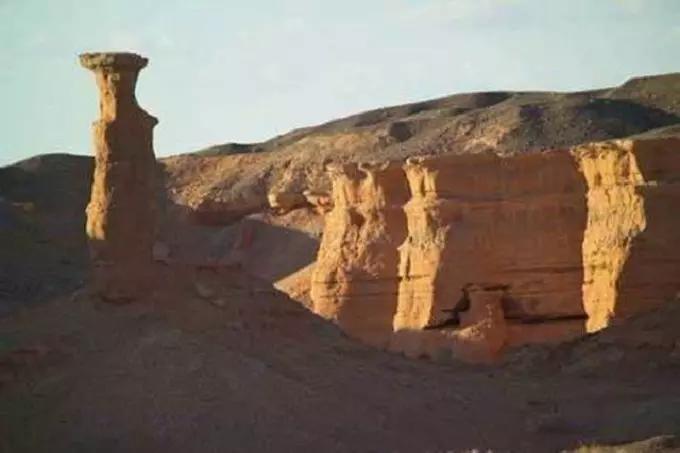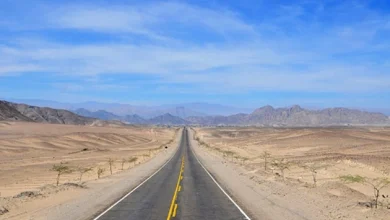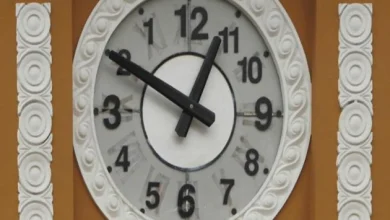Tiahuanaco mystery and the starry sky

The mysteries of the ancient city of the American continent – Tiahuanaco (Tiwanaku), have been written about more than once. Strange events and discoveries on the moon were also reported. The mentioned riddles, known for tens, hundreds and thousands of years, have not yet found a clear scientific explanation.
In such cases, all sorts of “crazy” hypotheses are often born, in which an attempt is made to explain what science cannot explain, and sometimes connections are revealed between such phenomena, events and objects that, it would seem, cannot be connected in any way. One of these cases will be discussed below.
A city on the seashore
This city is located at an altitude of almost 4,000 meters off the shores of the salt Lake Titicaca in the Andean region of northern Bolivia, on the Altiplano plain, surrounded by snow-capped Cordillera ridges. However, the remains of a large port found on its territory, seashells, images of flying fish and skeletons of fossil marine animals indicate that the city was once located on the seashore.
Recently, at the bottom of Lake Titicaca, researchers found the remains of buildings, a paved pavement and walls more than a kilometer long, made of huge blocks of stone. According to Professor Ruben Vela from the Archaeological Institute of Tiahuanaco, the ruins found are “a coastal temple where important people were buried.” How did these ruins end up at the bottom of the lake?
Researchers associate these facts with the epoch before the beginning of the processes of mountain formation that took place 60-70 million years ago. It is believed that there were no people on Earth then.
Tiahuanaco got its name after the inhabitants left it forever. Historians do not know who these residents were and what they called the city.
It is said that a messenger came running to the Supreme Inca Maita Capac, who stopped to rest among the ruins of the ancient city, with news from the capital of the empire – Cuzco. The ruler appreciated the diligence of the messenger, comparing him with a fleet-footed guanaco – a relative of llamas – and said: “Tia Huanaco” (“You are as fast as a guanaco”). So the name of the city appeared.
Who founded it?
The Indians who lived in these parts at the time of the Spanish invasion believed that ordinary people could not build such a large city – it was built by a long-extinct tribe of giants. Researchers did not believe in giants, but attributed an incredibly ancient origin to the city. The Bolivian researcher of Austrian origin Arthur Posnansky, who devoted half his life to the study of Tiahuanaco, proved that the city was founded at least 17 thousand years ago. And archaeologist Dr. H.S. Bellamy believed that the age of the city was 250 thousand years.
The French paleontologist Alcide d’Orbigny (1802-1857), in his work “The American Man”, expressed the opinion that the creators of Tiahuanaco were the inhabitants of the powerful pre-Inca state.
A palace or an observatory?
The city, or rather what is left of it, consists of several main objects. The city’s most well–reconstructed part is Kalasasaya, a structure with a rectangular base measuring 118 x 18 meters. It is surrounded by a wall, in which a number of monolithic columns are built. The courtyard of Kalasasaya, which occupies about a third of its area, is located below ground level. They entered Kalasasaya through a large stone gate on a monumental staircase with six steps. Adjacent to the courtyard was a covered hall with large portals and windows. At one time, it was decorated with gold products, and gold nails were driven into the walls, on which copper and bronze plates were held, covering the stone skeleton of the building.
Initially, Kalasasaya was perceived as a palace or even a fortress, but now researchers are inclined to think that it was a stellar observatory. Some structural elements in the walls are strictly oriented to certain constellations and are arranged in such a way as to facilitate measurements related to observations of the position of the Sun in the sky at different times of the year.
Surroundings of Kalasasaya
In the middle of the twentieth century, a sanctuary with an area of about 750 square meters was discovered next to Kalasasaya, the so-called Semi-underground temple.
Its base is more than one and a half meters deep into the ground. In 1932, Professor Wendell Bennett found a giant pink stone statue there.
Its height is slightly less than 7.5 meters. The giant’s head is decorated with a kind of turban, his hands are pressed to his stomach. In one hand – a vessel-kero, in the other – a pututu, a ceremonial horn from a shell.
A little to the south of Kalasasaya rises the pyramid of Akapana. Some researchers consider it a man-made structure, others – a hill, which was given the appearance of a stepped pyramid. There may have been a temple or an altar on its top, and a military fortress could have been located. A small artificial lake has been preserved there.

The Gateway to the Ancient World
Even further south, beyond the conditional city line, there is another terraced building, Puma Punku – Puma Gate. It is constructed of huge stone slabs, some weighing more than 100 tons. At the top of Puma Punku, the builders placed a sanctuary or an altar, and the entire object was surrounded by a double wall.
One of the most famous and probably the most mysterious Tiahuanac monuments is undoubtedly the Gate of the Sun – Inti Punku. They are located in the northwestern part of Kalasasaya and are carved out of a single andesite block measuring 3×3.75 meters.
The upper part of them on the eastern side is decorated with a rich relief, in the center of which there is probably an image of the main deity in the form of a human figure with a disproportionately large head surrounded by a halo. The halo is formed by 24 rays, each of which ends with the head of a jaguar or a cougar. Tears flow from the eyes of the deity – apparently, it gave moisture to the Earth, providing crops to the fields.
In the hands of the deity is a large royal rod with the heads of condors on top. The eyes of forty-eight smaller figures depicting half-humans and half-birds are turned to him. Above the entrance opening of the Gate of the Sun, a strip of ornament is visible, on which human faces are depicted. However, the most important thing here is the main relief with its central figure.
Scientists interpret the content of the relief in different ways. Some believe that the central figure symbolizes the Sun god, and the half-people–half-birds are the other stars facing their heavenly sovereign. According to others, the relief depicts the Tiahuanac calendar – solar or lunar.
The starry sky of 15,000 BC
If the Kalasasaya complex is really an observatory, then the calendar on the Gate of the Sun fits seamlessly into this complex.
Arthur Posnansky – professor, engineer, anthropologist, member of many scientific societies – in his work “Tiwanaku – the cradle of the American man” on the basis of his own archaeological research and astronomical calculations proves that the designers and builders of Kalasasaya correlated its geometry with the location of the stars. This is what the starry sky looked like… 17,000 years ago!
Of course, most adherents of orthodox science took Posnansky’s guess with undisguised skepticism. However, soon a group of scientists from related fields of science analyzed the results of his research. The group included: Dr. Hans Ludendorff, director of the Potsdam Astronomical Observatory, Dr. Friedrich Becker from the Specula Vaticanica Observatory and two other astronomers – Professor, Dr. Arnold Kohlschutter from the University of Bonn and Dr. Rolf Muller from the Potsdam Astrophysical Institute.
Scientists who worked from 1927 to 1930 came to a conclusion: the conclusions of Posnansky are basically correct, the buildings of Kalasasaya are oriented in such a way as to provide the most convenient observation of celestial bodies with the position that they occupied in the firmament in about 15,000 BC.
Another accidental resemblance?
Among the sculptures that have survived in Tiahuanaco, there are three such (one in a Semi–Underground temple and two in Kalasasaya) that suggest some thoughts. The sculptures differ in size, degree of preservation, manner and skill of execution, but all three depict a creature that the sculptors sought to present as a hybrid of a man with a beautiful beard – in the upper part of the body and a fish – at the bottom, and one of the researchers, the American journalist and traveler Graham Hancock, talking in Tiahuanaco with the surrounding residents, received interesting information.
It turns out that ancient local legends speak of “gods from the lake who had fish tails and whose names were Chullua and Umantua.”
The characters of this legend and the Tiahuanak sculptures clearly resemble another character – the hero of the legends of Ancient Babylonia, the fish-man Oannes, who in ancient times came ashore from the sea in Mesopotamia and taught the mind of the local aborigines.
The mysteries of the artifacts discovered in Tiahuanaco are largely solved if we accept the hypothesis of the existence on Earth in ancient times of an unknown highly developed proto-civilization, which served as a common basis for the civilizations of the Sumerians, ancient Egyptians, as well as the Olmecs and other peoples. We can only hope that in the future, archaeologists, historians and scientists of other specialties will discover indisputable evidence of the reality of this mysterious civilization, establish its origin and time of stay on our Earth.




